“What’s in a name? That which we call a rose by any other name would smell as sweet.”
William Shakespeare
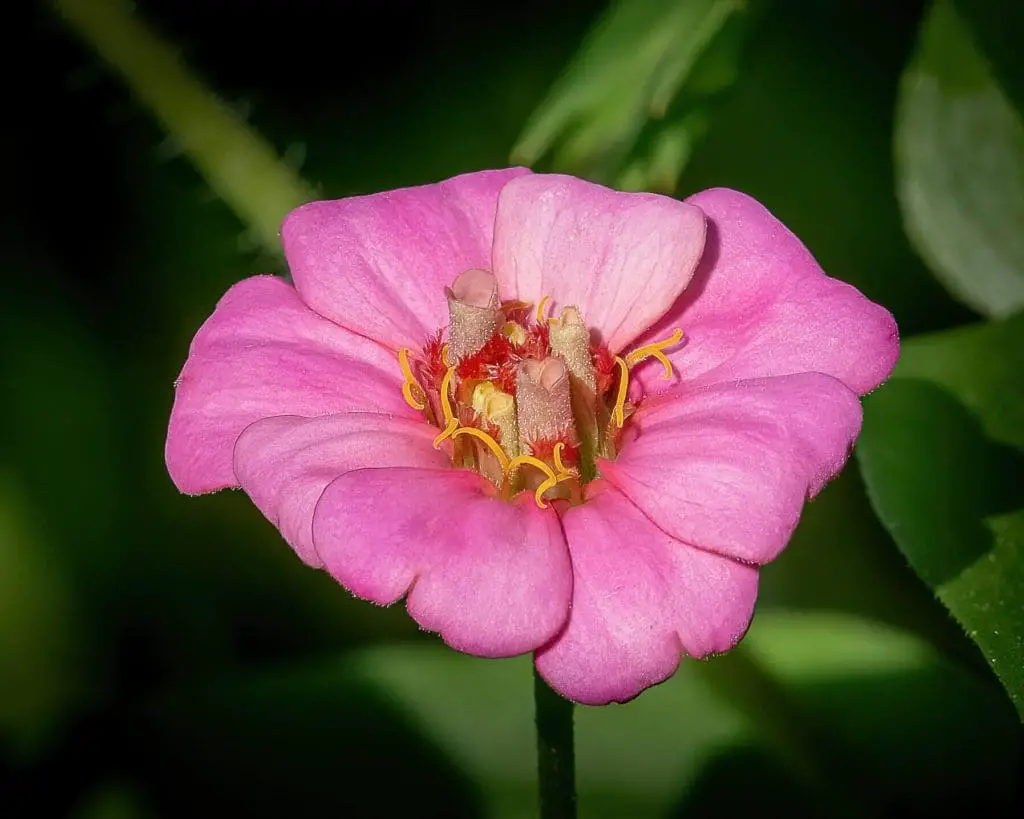
I spent two days trying to identify the name of a flower.
In my search, I downloaded two Flower ID apps which gave me two different results. I asked the photographer, who had also tried two identification apps and had the same results.
I even called my mother.
No one, not even the internet, knew quite what the pink flower with the furled petals in its center was. The final consensus was that it is a type of zinnia, known as “Giant-Almost-Dahlias.”
If only the German botanist Johann Gottfried Zinn was here (for whom the zinnia was named) ––maybe he would know.
But, my two-day search was not a total loss. I learned that the whipped cream white flower, along with the sunset orange and feathery fuschia one, are definitely zinnias. All three blooms even sport matching dainty yellow flowers at their centers, as if announcing to the world that they are related.
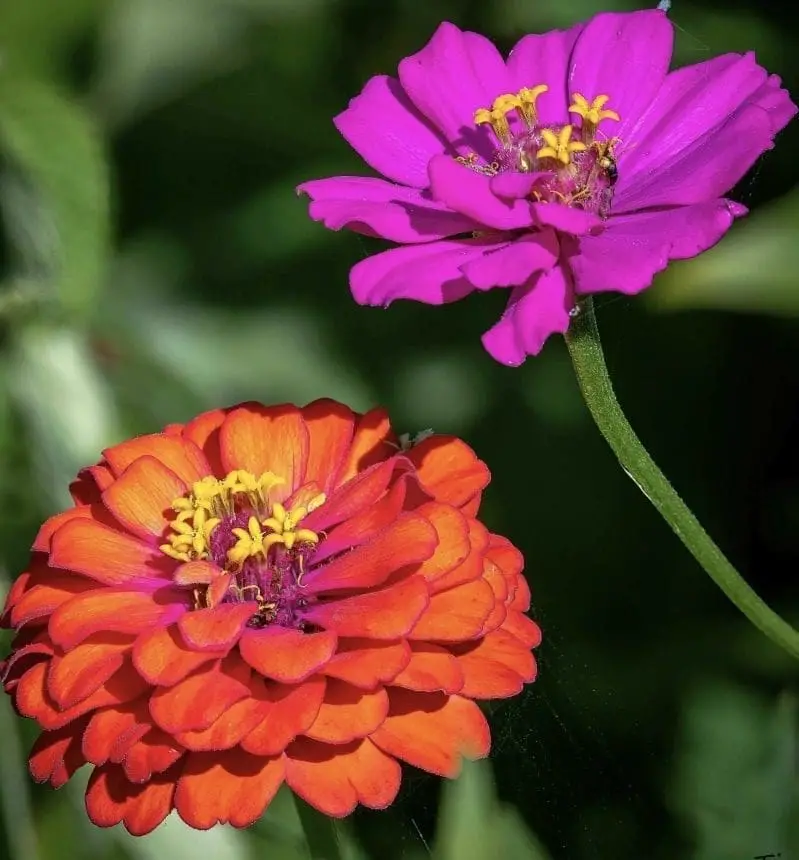
Distinguished primarily as “Zinnia Elegans” (a.k.a.”Elegant Zinnia”), these flowers are also known by the name of “Youth and Age” because they bloom from springtime to autumn.
Since they are one of the longest blooming flowers, zinnias have come to symbolize endurance, a quality that the hummingbirds particularly appreciate. But the term “Youth and Age” could also stem from the fact that some zinnias span only one inch across while others grow as large as seven. You might have encountered an eight-inch tall zinnia, but these flowers can even grow up to four feet in height.
Once I had gone down the zinnia research rabbit hole, my obsession with discovering the names of the rest of these late-blooming Fall flowers grew.
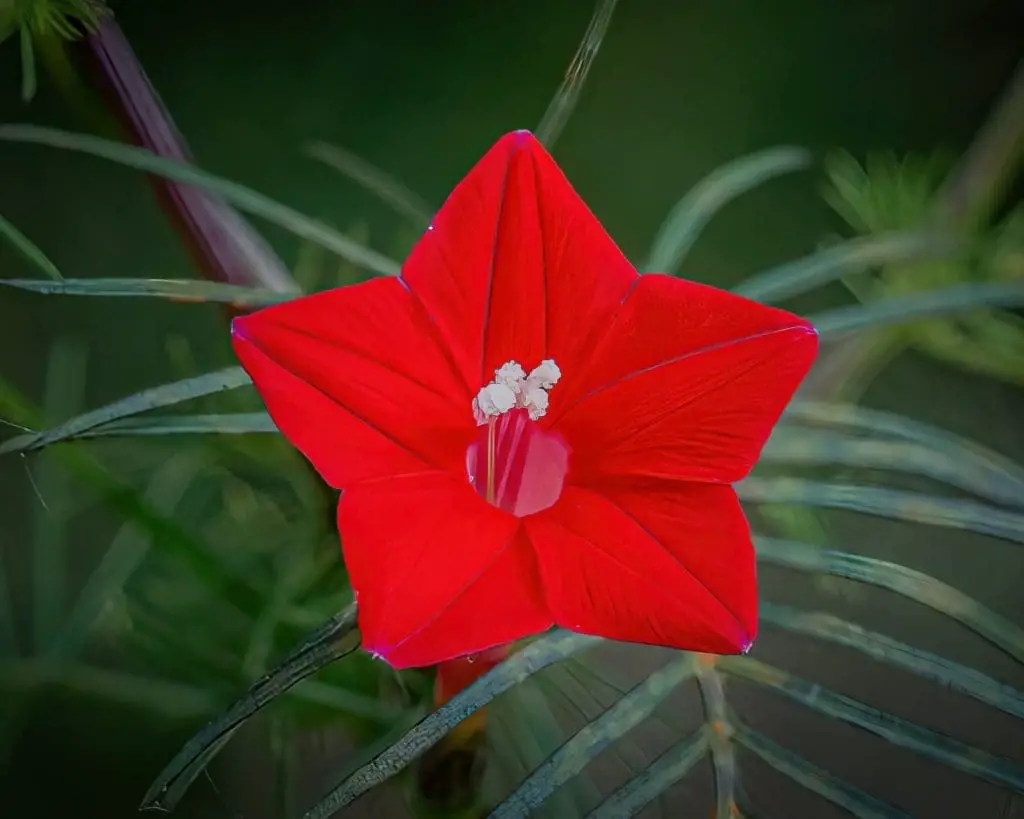
With its five scarlet red petals, the star-shaped flower blooming on the vine is known as a “Cardinal Climber,” which is a hybrid cross between a “Cypress Vine” and a “Morning Glory.” Its bright blooms appear in midsummer and continue to blossom until the first frost frightens them away.
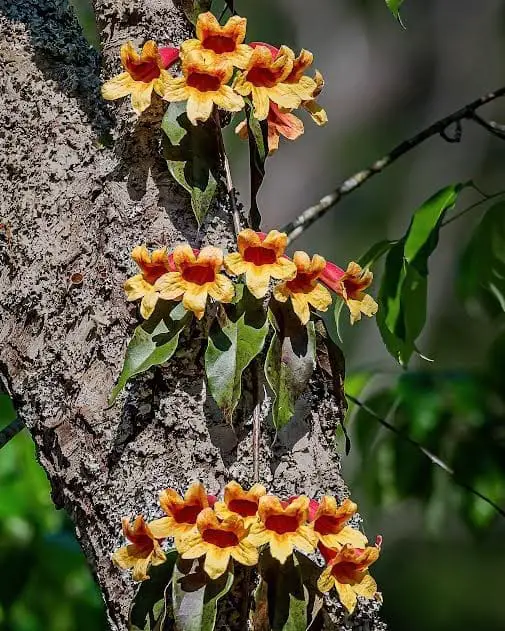
Another showstopper vine that blooms late into the Fall is Crossvine. Its fluted yellow and orange flowers are hard to miss, looking like a garland of sweet candy corn strung up a tree. Growing 50 or more feet long, Crossvine got its name from the cross-shaped pattern inside the stem when it’s cut. My favorite discovery? The blooms are said to smell like mocha.
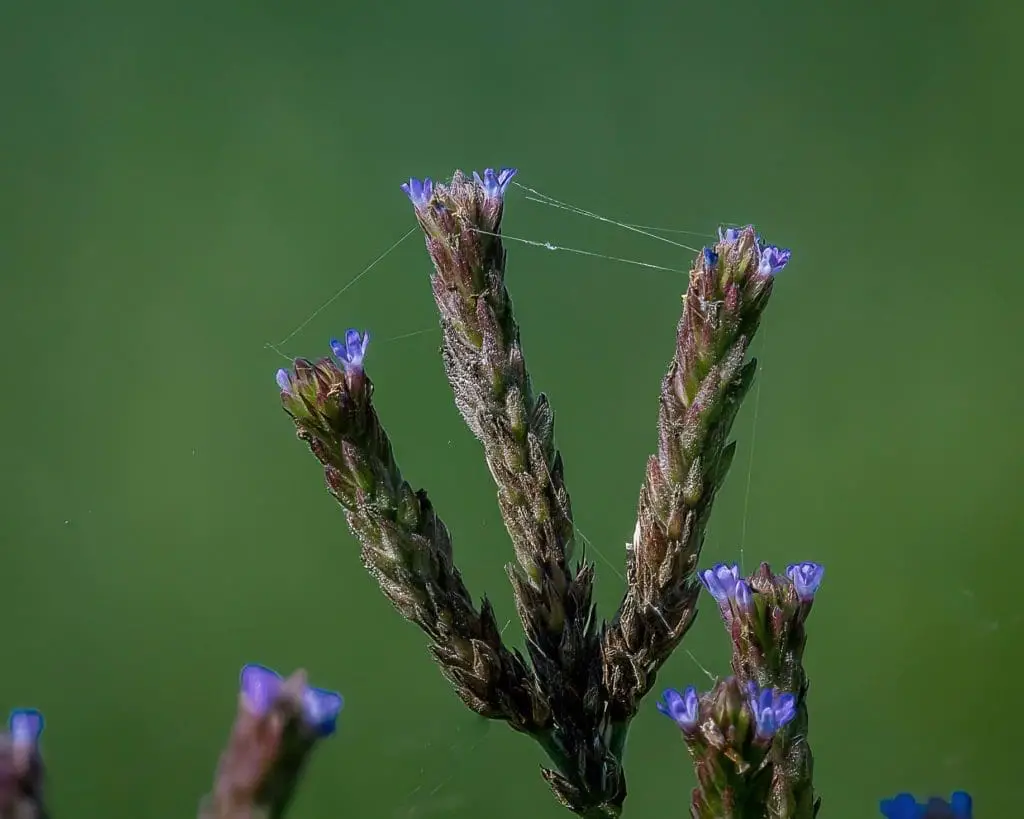
My last search led me to discover Brazilian Vervain, the name of the stalky plant tipped with tiny violet flowers. Also called “Swamp Verbena,” a decidedly less elegant name, this plant thrives along roadsides and near water. But, it’s also known by yet another name––”Herb-on-the-Cross.” In ancient times, vervain was considered a sacred plant and believed to be the herb used to treat Christ’s wounds on the cross.
After two days of delving into discovering the roots of these plant names, I’ve learned quite a lot. Mainly, I’ve learned that humans like to name things, often after other human beings, as in the case of the zinnia.
But I also realized that in our zeal to name and classify, it’s easy to lose sight of the beauty blooming right in front of us.
Stop and smell the mocha-scented vines, notice the ancient elegance growing along a roadside, and finally plant that packet of flowers you’ve been saving in a kitchen drawer for over a year.
Plants brighten and bring life to our days, whether or not we know their names.
Related Posts: